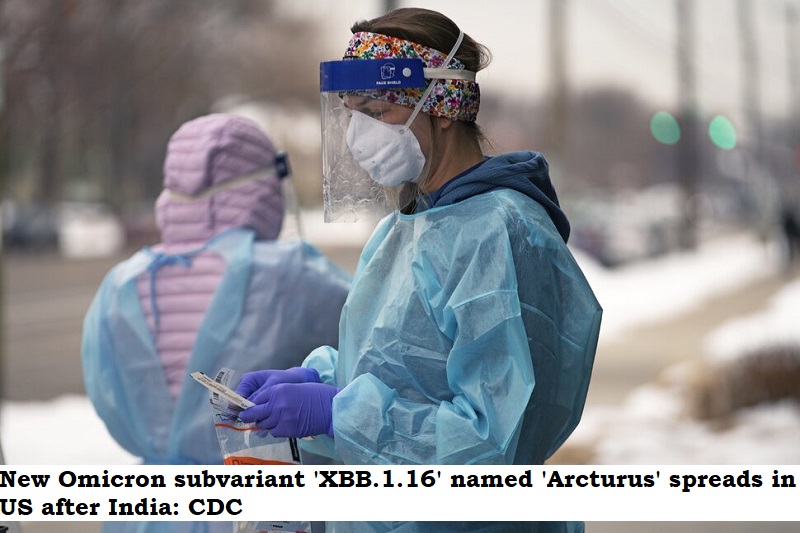
The Centers for Disease Control and Prevention (CDC) has reported that the new Omicron subvariant XBB.1.16, also known as ‘Arcturus,’ which has been driving up COVID-19 cases in India, has been found in the United States as well.
The CDC’s weekly bulletin released on Friday revealed that the new variant accounts for 7% of new cases reported this week. It is the first time the CDC has flagged separate COVID-19 cases under XBB.1.16, as all infections were previously grouped under the XBB variant.
Most COVID-19 cases in the US are due to XBB variants, with XBB.1.5, also known as ‘Kraken,’ believed to represent over three-quarters of cases. However, levels of this variant are waning.
In addition, the Southeast Asia and Eastern Mediterranean regions have also reported a surge in cases due to XBB.1.16. The World Health Organization’s (WHO) Southeast Asia region reported a nearly 500% rise in cases month over month in India, Indonesia, Thailand, Bangladesh, Nepal, Sri Lanka, Maldives, Bhutan, and Timor-Leste. Reported cases are also slightly up in the Eastern Mediterranean region.
The Arcturus variant, which is considered more transmissible and immune-evasive than its predecessors, has been identified in 29 countries so far, and cases have doubled from the last full week of March to the first partial week of April, according to WHO’s Thursday update.
The variant may escape immunity acquired by previous infections or vaccines. Common symptoms have been reported, although doctors in India have noted slight changes, especially in children and the elderly. Some children have reported cases of conjunctivitis or pink eye, causing ‘sticky eye.’ This symptom has not often been noted with other COVID-19 variants.
The WHO declared XBB.1.16 a ‘variant under monitoring’ in late March, and the variant is considered ‘one to watch’ by the world health body, according to Maria Van Kerkhove, the COVID-19 technical lead for the WHO. The XBB.1.16 variant is a recombinant of two sub-variants, BA2.10.1 and BA.2.75.
A preprint study from scientists at the University of Tokyo suggested that the variant spreads about 1.17 to 1.27 times more efficiently than relatives XBB.1 and XBB.1.5 and that it ‘will spread worldwide in the near future’ as it seems ‘robustly resistant’ to antibodies from other COVID-19 variants.

Post Your Comments